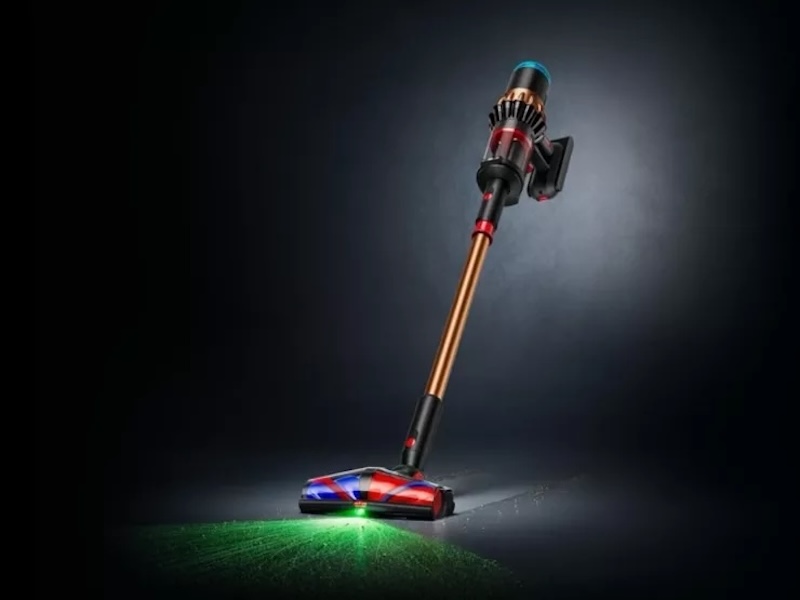Here’s a startling fact: the air inside your home can be up to five times more polluted than the air outside. Yet most of us spend roughly 90% of our time indoors, breathing whatever quality of air our homes provide.
Indoor air quality isn’t just about comfort – it’s a health issue that touches everything from how well you sleep to how easily you breathe. While many homeowners focus on obvious culprits like smoking or chemical cleaners, they often miss how their daily cleaning habits can make or break their indoor air.
One of the most powerful weapons in this fight against indoor pollution is a quality vacuum, which can dramatically transform your home’s air when used correctly.
Understanding Indoor Air Quality
Indoor air quality describes how clean and healthy the air is inside buildings. When it’s poor, the consequences extend far beyond mild discomfort.
Poor air quality can trigger allergic reactions, spark asthma attacks, and cause respiratory problems that particularly impact children, older adults, and anyone with existing health conditions.
The invisible enemies floating in your home’s air come from surprisingly common sources:
- Dust mites thriving in carpets, bedding, and upholstery
- Pet dander that clings to surfaces long after your furry friends have moved on
- Pollen hitchhiking indoors on clothes, shoes, and through open windows
- Mold spores released from damp bathrooms, basements, and poorly ventilated areas
- Volatile organic compounds (VOCs) off-gassing from furniture, paint, and cleaning supplies
These microscopic troublemakers don’t just settle and stay put. Normal household activities – from cooking dinner to simply walking across a room – launch them back into the air, where they can float for hours before finding new places to land.
Everyday Habits That Influence Air Quality
Your daily routine shapes your home’s air quality more than you might realize. That morning cooking session releases steam and particles into the air.
Opening windows brings in fresh air but also invites outdoor pollutants to join the party. Even something as innocent as fluffing pillows or making beds sends clouds of dust mites airborne.
Regular cleaning routines form your primary defense against these airborne invaders, but here’s the catch: not all cleaning methods are created equal.
Some well-intentioned cleaning efforts actually backfire, stirring up more dust than they capture and spreading particles throughout your home rather than eliminating them.
The Role of Cleaning Tools in Air Quality
The tools you choose for cleaning can either help or hinder your quest for cleaner air. Traditional feather dusters and dry cloths often act more like particle redistributors than eliminators, simply moving dust from your coffee table to your couch.
Damp cloths and mops perform better, actually trapping particles rather than launching them into orbit.
Vacuums occupy a special place in the air quality toolkit, particularly when it comes to extracting the fine dust and allergens that love to burrow deep into carpets, rugs, and upholstered furniture.
The vacuum landscape offers plenty of choices: upright models deliver serious suction power for deep carpet cleaning, canister vacuums provide the flexibility to tackle stairs and delicate surfaces, and robotic vacuums handle daily maintenance (though they typically can’t match the deep-cleaning power of their manual counterparts).
The real game-changer in vacuum technology comes down to HEPA filtration systems. These sophisticated filters capture an impressive 99.97% of particles as small as 0.3 microns – that means they’re nabbing microscopic allergens that would otherwise take a victory lap through your home’s air circulation system.
Best Practices for Using a Vacuum to Improve Air Quality
Getting the most from your vacuum requires more than just pushing it around the room. Vacuuming techniques matter enormously for effective dust and allergen removal.
Start by adjusting the height setting to match your flooring – set it too high and you’ll lose suction power, too low and you risk damaging delicate surfaces.
Don’t forget those specialized attachments; they’re designed to reach corners, crevices, and upholstery where dust loves to hide.
Slow and steady wins this race. Quick, hurried passes might make you feel productive, but they often leave embedded dirt and allergens behind. Take your time with overlapping strokes to ensure thorough removal.
Regular maintenance separates effective vacuums from dust-spreading disappointments. Empty bags or dust containers before they’re completely full – overstuffed containers reduce suction and can actually blow particles back into your air.
Clean or replace filters according to the manufacturer’s schedule, because dirty filters don’t just reduce performance; they can release trapped particles back into your living space.
Don’t neglect the brush roll, either. Hair, string, and debris wrapped around the brushes can impair performance and spread particles during cleaning sessions.
Additional Strategies for Cleaner Indoor Air
While vacuuming forms the cornerstone of clean air maintenance, other habits amplify your efforts significantly.
Weekly hot-water washing of bedding eliminates dust mites that thrive in warm, humid environments. Curtains and drapes deserve regular attention too, since these fabric surfaces act like particle magnets.
Strategic placement of high-quality doormats – both inside and outside your entrances – reduces the amount of dirt and pollutants that make it past your threshold.
Clutter creates more than visual chaos; it multiplies the surfaces where dust can accumulate and makes thorough cleaning nearly impossible. When using cleaning products, ensure adequate ventilation to prevent chemical buildup that can compromise your air quality efforts.
Common Mistakes to Avoid
Even well-intentioned cleaning efforts can backfire spectacularly. Operating a vacuum with a dirty or clogged filter ranks among the worst offenses – you’ll actually release more dust into the air than you remove.
Neglecting to clean vacuum attachments creates breeding grounds for bacteria and mold, which then get distributed throughout your home during cleaning sessions.
Racing through cleaning routines might feel efficient, but it typically means missing the hidden dust accumulating in corners, under furniture, and in the countless crevices where particles settle most heavily.
Summing Up the Path to Cleaner Air
Achieving excellent indoor air quality starts with recognizing how your daily habits either support or sabotage the air you breathe. Proper vacuum use and maintenance, paired with consistent cleaning practices, creates the foundation for a healthier indoor environment.
Take an honest look at your current cleaning approach and consider where small, consistent improvements might make a difference. Develop a realistic cleaning schedule that includes regular vacuuming with well-maintained equipment.
Something as simple as checking your vacuum’s filters and overall condition can yield dramatic improvements in your home’s air quality – and by extension, your family’s health and daily comfort.


